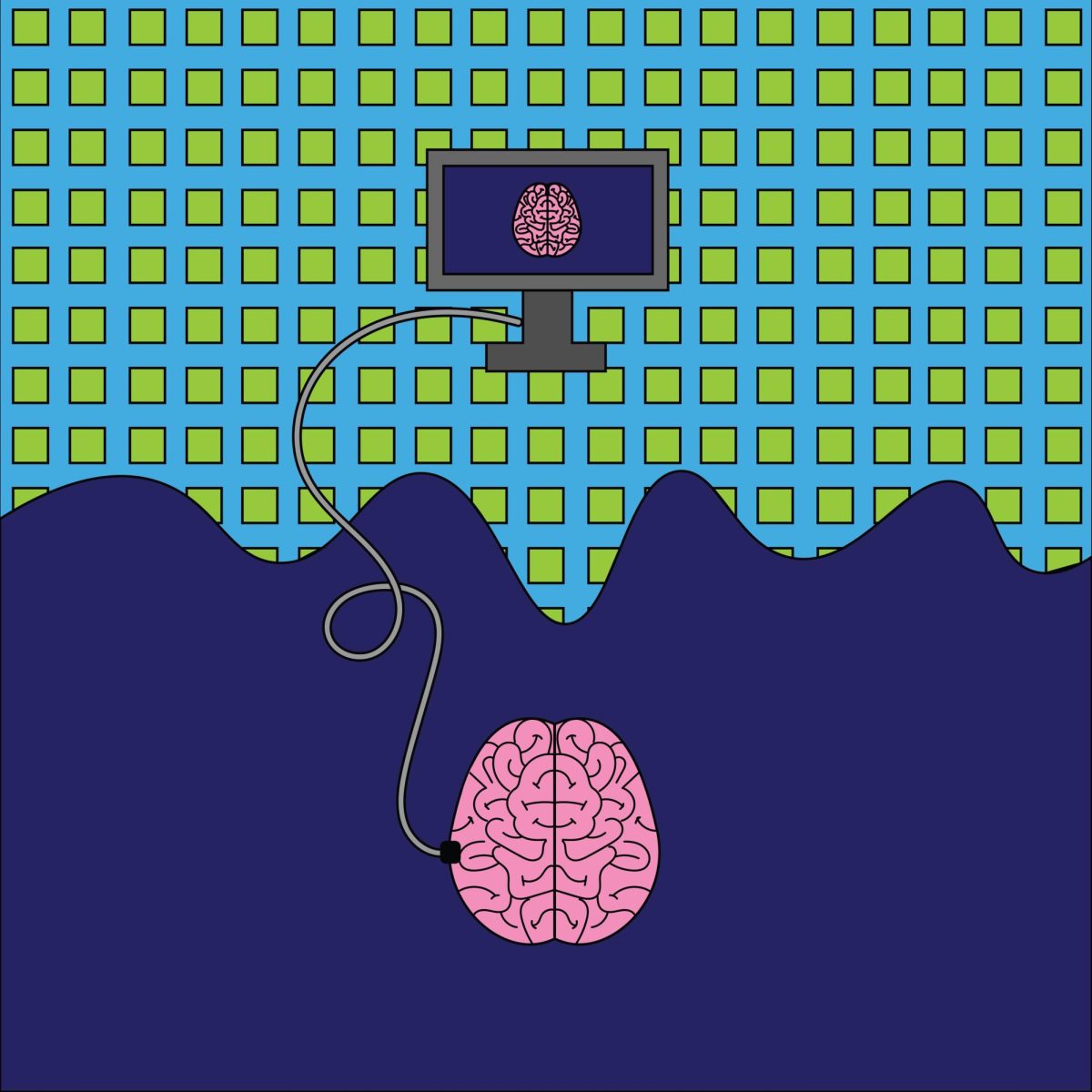Dungeon-like. Too small. Too crowded. These are some of the phrases University of Wisconsin students have used to describe the Natatorium and the Southeast Recreational Facility.
These negative words have helped spur UW students and officials to push for a renovation project for the Nat, making it more spacious, modern and comparable to facilities on other campuses state and nationwide.
NatUp, a student group co-founded by UW senior Mike Bernatz and UW junior Sheala Mullaney in June 2009, is working with the UW Division of Recreational Sports to garner support and help put the proposal on a referendum during the Associated Students of Madison elections this April.
The need for a renovation
The original Nat, which consisted of a basic swimming facility, was built in 1963, with the other present day workout areas added on in 1967. According to Dale Carruthers, director of Recreational Sports, the university started thinking about renovating the Nat in 2002.
In 2003, the Student Services Finance Committee permitted Recreational Sports to commission an external study to assess the condition of the workout facilities. The results suggested each facility should be updated, so the university came up with a long-term construction plan.
According to Carruthers, one reason for the upgrade is many students who participated in assessments have complained about the facilities, saying they were “lacking” and “outdated.”
Bernatz said he and Mullaney got involved with the Nat renovation project after seeing the facilities at other universities and hearing students grumble about the current state of the facilities.
“[Mullaney and I] were serving on the Rec Sports Board through ASM Shared Governance (Committee) and we got selected to represent Wisconsin at the Big Ten Sportsmanship Conference,” Bernatz said. “We traveled to Ohio State… and their new facility is incredible, and I didn’t realize the state of our facilities until I saw other schools’.”
Carruthers also pointed to the increased use of the Nat as a need for expansion. Over the past decade, he said the student population has increased by 811 students since 2000 and facility use increased by 50 percent in that same time period.
“Over 32,000 unique students used a recreational facility last year,” Carruthers said. “Other than the Union, there’s not a service that serves more students than Recreational Sports.”
Alan Fish, UW director for facilities planning and management, agreed a Nat renovation would suit the Lakeshore area well, as the university is renovating and rebuilding those dormitories to accommodate more students.
The new features proposed
The number one priority in the project, Carruthers said, is to increase workout space since the demand for the facilities is not likely to diminish. The new Nat, he said, would ideally have one square foot of space per student, making it 20 percent larger than the SERF.
The new Nat would also designate the entire top floor as the cardio and weight training workout area, Carruthers said.
In regard to energy efficiency, Fish said UW does not have an architect for the project yet, but the new building will conform to Leadership in Energy and Environmental Design building certification standards.
“All of the new buildings and major additions we do now are at minimum LEED certified,” Fish said. “We are looking at certified silver level probably with the Nat, which will be significantly more efficient than the buildings built in the ’60s.”
As opposed to the “closed in” designs of the Nat and SERF, Fish said the new Nat would have more open space and more natural light to make it more “welcoming” to students.
Carruthers added if the referendum is passed in April, construction would begin in January 2012 after designs are finalized, and finally, the new Nat would be available for students in fall 2014.
The possible costs to future students
Carruthers said the funding methods for the roughly $60 million Nat renovation project are still not certain. Presently, Carruthers said there have been no donations made to the project, but he said they are talking to numerous potential donors.
Without external funding, Carruthers said the payment method of 30 year bonding would raise the segregated fees for a student’s tuition by approximately $54 per semester.
Carruthers said because Recreational Sports has set aside around $1 million since 2002 to help pay costs of the project, an increase in segregated fees will not show up on tuition bills until fall 2013. This means the vast majority of current students, who will be voting on the project, will not have to pay for the renovations.
When asked about the questionable ethics of having current students vote to increase the tuition of future students — students who will not have a say in the matter — Carruthers said it is just something that needs to be done.
“[The vote] is probably not fair, but what other way is there?” Carruthers said. “I think students should take a hard look at this and give consideration as to whether or not this is a good value for other students.”
Bernatz said this issue is similar to what happened with the Union South referendum, where the confusing language of the referendum left many students angry.
“There was so much anger and frustration with the whole [Union South] thing and why are we paying for this when we aren’t going to see it, that we’ve tried to alleviate that pressure,” Bernatz said. “We are trusting students to speak for future students in saying what they really want.”
ASM Chair Tyler Junger also referenced the Union South referendum, saying the nearly $200 per year rise in segregated fees for the project, in addition to the $40 for the Student Activity Center is making the proposal “tough to swallow” for some.
What about the SERF?
Carruthers said the university is also looking at the possibility of renovating the SERF, but the Nat was ruled to be a higher priority.
Carruthers said the university faced two problems with regard to a SERF renovation: a power substation preventing expansion outward and a foundation not sound enough to support another level on top.
“Originally we considered the SERF,” Carruthers said. “Basically, it would have to be probably a total teardown and rebuild, which would have been… even much more expensive than a Nat renovation, and we probably couldn’t even get as much square footage out of that as we could at the Nat.”
Similarly, Bernatz added he and NatUp are not concerned with SERF renovation plans because it does not really need improvements at the moment, and a new Nat could help absorb the crowd from the SERF.
The vote
NatUp has recently been collecting signatures on a petition to have a referendum on whether to upgrade the Nat during the April 12-14 ASM spring elections.
Bernatz said NatUp chose to get a petition instead of appealing directly to Student Council because it was a good way to raise awareness and gauge student opinion.
“We thought the best strategy was to go out and get in front of people and get the signatures because we thought it was a good marketing tactic, and we thought it made a louder statement to go out and get the kinds of numbers we have gotten to show support for the project,” Bernatz said.
The signature drive for the petition yielded around 6,600 signatures, well over the 10 percent of student body requirement that puts an item on a referendum ballot.
ASM will be adding another stipulation to this referendum, Junger said.
Imposing what Junger said is essentially a quorum requirement — if 15 percent of the student body does not vote on the referendum — ASM will not take a stance for or against the project.
In 2006, there were several votes for a referendum to fund the Union Initiative proposal. It was ostensibly rejected in the first two votes, but due to technical glitches in the ASM voting system, both were thrown out.
The referendum was passed in a fall 2006 ASM election, but voter turnout was very low, with around 8 percent participating, Junger said.
Additionally, there was controversy over the question that appeared on the ballot. Junger said the referendum asked two different questions but only offered one option.
Bernatz said he has been working with ASM Student Elections Commission Chair Noah Pearce to make sure the language on the Nat referendum is fair and unbiased in order to avoid the problems that arose from the Union South referendum.
Carruthers said he was unsure how the vote would turn out but said there has been a lot of excitement so far over the project.
If the referendum fails, Bernatz said NatUp does not have any plans to continue the efforts, as the students will decide what is best in the vote.
“If it gets voted down… we really don’t have any contingency plan,” Bernatz said. “Hopefully there are a lot of young, passionate members of NatUp that will probably pursue the cause to whatever extent, but if the students honestly don’t want [a new Nat] then they don’t want it.”
Alicia Yager currently works in the press office of ASM. All interviews and reporting in this in-depth in relation to ASM were conducted and written by Deputy News Editor Kyle Mianulli to eliminate any possible bias.













